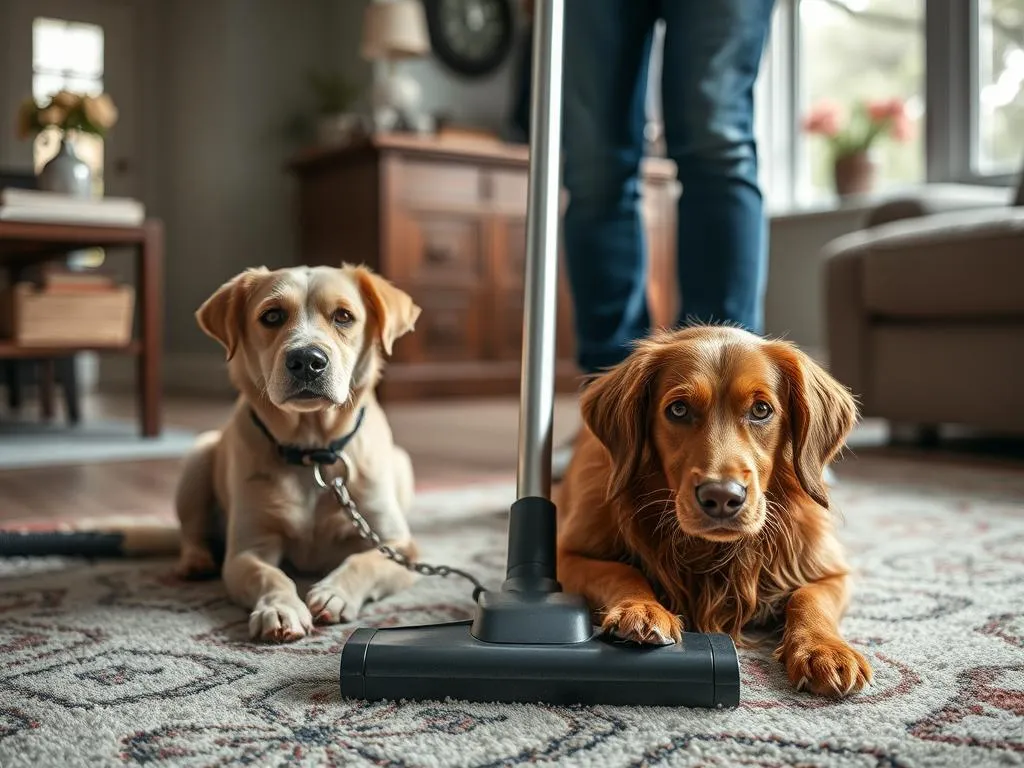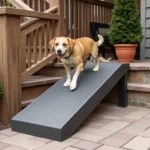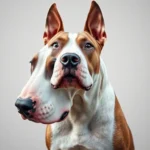
Introduction
Living with dogs can be one of the most rewarding experiences, filled with love, laughter, and companionship. However, it also comes with its unique set of challenges, particularly when it comes to household cleanliness. One of the most significant chores for dog owners is vacuuming, a task that can feel like an uphill battle. With furry friends shedding hair and tracking in dirt, maintaining a clean living space is crucial not just for aesthetics, but for the health of both humans and pets.
In this article, we will delve into the importance of vacuuming in a dog-friendly home, share vacuuming tips with dogs, and provide insights on choosing the right vacuum, effective techniques, maintenance, and additional cleaning strategies. By the end, you’ll be well-equipped to tackle the challenge of keeping your home clean and healthy for your beloved canine companions.
Why Vacuuming is Essential in a Dog-Friendly Home
Health Benefits
One of the primary reasons for regular vacuuming in a home with dogs is the health benefits it provides. Dogs can carry allergens and dander that may trigger allergies or respiratory issues in both pets and humans. Regular vacuuming helps reduce these allergens, creating a healthier environment for everyone.
Maintaining Cleanliness
Pet hair and dirt can significantly impact the aesthetics of your home. Regular cleaning not only keeps your floors looking pristine but also ensures that your furry friends are living in a clean environment. Dogs can be prone to skin irritations and infections if they come into contact with excessive dirt or bacteria, making cleanliness a crucial aspect of dog hygiene.
Odor Control
Another compelling reason to vacuum regularly is odor control. Dogs can sometimes carry a noticeable smell, and pet odors can permeate carpets and upholstery. By vacuuming frequently, you can help eliminate these odors, ensuring your home remains fresh and inviting.
Choosing the Right Vacuum for Dog Owners
Types of Vacuums
When it comes to vacuuming tips with dogs, choosing the right vacuum is paramount. There are several types of vacuums available, each with its pros and cons:
- Upright Vacuums: These are powerful and great for large areas but can be heavy and cumbersome.
- Canister Vacuums: These are more versatile and easier to maneuver, particularly in tight spaces.
- Robotic Vacuums: These automatic vacuums can be effective in picking up pet hair daily, freeing up time for dog owners.
Key Features to Look For
When selecting a vacuum, consider the following features that are particularly beneficial for pet owners:
- Strong Suction Power: A vacuum with robust suction is essential for picking up pet hair and dirt effectively.
- Specialized Pet Hair Attachments: Look for vacuums that come with attachments designed specifically for pet hair removal.
- HEPA Filters: These filters help capture allergens, ensuring cleaner air in your home.
- Ease of Emptying and Cleaning: A vacuum that is easy to empty and maintain will save you time and effort.
Recommended Vacuum Models
Here are a few top-rated vacuums that dog owners swear by:
- Dyson Ball Animal 2: Known for its powerful suction and specialized pet tools.
- Shark Navigator Lift-Away: A versatile option that’s lightweight and easy to use.
- Roomba i7+: An advanced robotic vacuum that can be programmed to clean up pet hair automatically.
Effective Vacuuming Techniques with Dogs Around
Preparing the Area
Before you start vacuuming, it’s essential to prepare the area. Here are some vacuuming tips with dogs in mind:
- Secure Your Pets: Keep your dog in a separate room or in their crate while you vacuum. This not only keeps them safe but also reduces their anxiety about the noise.
- Establish a Routine: If your dog is particularly sensitive to the sound of the vacuum, create a routine so they know when to expect it. Over time, they may become more accustomed to the noise.
Vacuuming Strategies
Timing can be everything when it comes to effective vacuuming. Here are some strategies to consider:
- Best Times to Vacuum: Choose a time when your dog is least active, such as after a walk or playtime, to minimize disruption.
- Techniques for Hard-to-Reach Areas: Use attachments to clean corners, under furniture, and other nooks where pet hair tends to accumulate.
Safety Tips
Safety is paramount during the vacuuming process. Here are some tips to keep your dog safe:
- Keep Cords Away: Ensure your dog is not near the vacuum’s cords, as they can pose a choking hazard.
- Watch for Moving Parts: Be mindful of how your dog reacts to the vacuum’s movements, and avoid vacuuming near them if they seem anxious.
Maintaining Your Vacuum for Optimal Performance
Regular Maintenance
To keep your vacuum performing at its best, regular maintenance is essential. Here are some maintenance tips:
- Clean Filters and Brushes: Regularly check and clean the filters and brushes to prevent clogs and maintain suction.
- Check for Clogs: If you notice a reduction in suction power, inspect the vacuum for clogs and remove any hair or debris.
Troubleshooting Common Issues
Even the best vacuums can encounter issues. Here’s how to troubleshoot:
- Loss of Suction: If your vacuum loses suction, check the filters, and clean or replace them as needed.
- Tangled Hair: If hair gets tangled in the brushes, turn off the vacuum and carefully cut away the hair to prevent damage.
Additional Cleaning Tips for Dog Owners
Beyond Vacuuming
While vacuuming is crucial, there are other methods to keep your home clean:
- Lint Rollers and Sticky Tape: These are great for quick clean-ups on furniture and clothing, effectively removing pet hair.
- Regular Grooming: Grooming your dog regularly helps minimize shedding, reducing the amount of hair that ends up on your floors.
Creating a Cleaning Schedule
Establishing a cleaning schedule can help you stay organized:
- Recommended Vacuuming Frequency: Depending on your dog’s breed and shedding levels, you may need to vacuum daily or weekly. Long-haired breeds may require more frequent cleanings.
- Incorporating Other Tasks: Combine vacuuming with other cleaning tasks, like dusting and mopping, to streamline your household chores.
Conclusion
In summary, maintaining a clean and healthy home for both dogs and humans is crucial. Regular vacuuming not only promotes a hygienic environment but also contributes to the overall well-being of your furry friends. By implementing the vacuuming tips with dogs discussed in this article—such as choosing the right vacuum, employing effective techniques, and ensuring regular maintenance—you can conquer the challenge of pet-related messes.
With a little effort and the right tools, you can create a happy, healthy living space for both you and your beloved canine companions.
FAQs
How often should I vacuum if I have a dog?
The frequency of vacuuming largely depends on your dog’s breed and shedding levels. Long-haired breeds may require daily vacuuming, while short-haired breeds could be vacuumed once a week.
What are the best vacuum attachments for pet hair?
Look for vacuums that come with specialized attachments such as pet hair brushes, upholstery tools, and crevice tools. These can help effectively remove hair from various surfaces.
Can vacuuming help with dog odors?
Yes, regular vacuuming can help eliminate odors associated with pets by removing hair, dander, and dirt that contribute to unpleasant smells in your home.
How can I get my dog used to the sound of the vacuum?
Introduce the vacuum gradually by letting your dog sniff it when it’s turned off. You can also reward them with treats when they remain calm during vacuuming sessions to reinforce positive associations.









